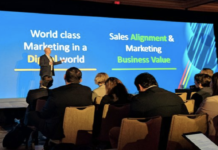By Luanne Tierney, CEO & Founder, LT & Associates
Marketing has changed dramatically with rapid shifts in technology. So much so that we no longer categorize targets as B2C or B2B, but rather B2H (Human). Consumer expectations are less about expectations than they are demands commanding a response from business.
For example, customers expect to be recognized when they login to a site they visit frequently. Every company is in the digital transformation business, and it’s about delivering a great customer experience and anticipating their customers’ needs.
There is one thing that has stayed constant, and that’s the fluidity of marketing budgets. Large brands today can no longer rely on the big budgets and media spend of the past.
Gone are the days when it was only about the Super Bowl commercials. (I really enjoyed the commercials during Super Bowl LIII!) Today, marketing leaders have to discern how to allocate dollars for maximum impact across a range of other channels such as digital media, social, events, PR, CRM tools and more.
Marketing strategies have to encompass a full engagement stack including public relations, social programs, video, field and sales activities as well as the right measurement tools — regardless of the company’s budget or size.
In some ways, it’s gotten more challenging to measure marketing success. We now have digital data that can define most everything, but deciding the right measurement that defines success for your business is often tricky. With so much data at hand, it is vitally important to avoid analysis paralysis.
Consider that millennials now constitute 25% of the economy’s buying power and are either in influencer roles or working their way into more powerful decision making roles. The takeaway is that decision makers are getting younger, requiring businesses to appeal to new audiences.
Social, digital and video are becoming the platforms of choice to deliver information to these audiences as they continue to grow in size and importance. Companies need to outthink vs. outspend. We have seen smaller companies launch via video (think Dollar Shave Club) to capitalize on the potential of these messages to go viral — a huge opportunity for the brand.
As modern marketers, we are living in what Fortune has called the “attention economy,” with attention being the most valuable currency in the world. The need to attract attention with content that is authentic and resonates emotionally is shared by businesses, globally.










